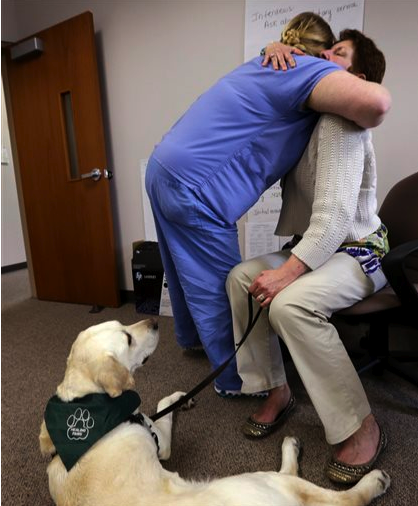By LISA BAUMANN
The Associated Press
EDITOR’S NOTE — The Daily Herald of Everett, a sister newspaper of the Peninsula Daily News, has in-depth coverage of the Oso slide. Latest slide and Snohomish County information can be found on the Herald’s website, www.heraldnet.com.
Related story: “Snohomish County mudslide — how to donate to victims, how to report someone missing”: https://www.peninsuladailynews.com/article/20140328/NEWS/303289959
EVERETT — As medical examiners painstakingly piece together the identities and lives of the 30 people known killed when the Oso mudslide wiped out dozens of homes, one mystery troubles them.
One set of remains does not fit with the description on the missing persons list, which, as of Thursday included 17 people.
The medical examiners know it is a male.
But his remains give no clue as to who he was, or who might be looking for him. They can’t even identify his age range. Without possible family members to compare, DNA tests are useless. At this point, gold teeth are all they have to go on.
The mystery underscores the tedious process of identifying remains more than a week after the March 22 landslide that broke off a steep hill, roared across the North Fork of the Stillaguamish River and buried the homes outside Oso, a small mountainside community about 55 miles north of Seattle.
Like the homes, the cars and the other parts of people’s lives swept away by the torrent of mud, some bodies are in pieces.
Norman Thiersch, the Snohomish County Medical Examiner, said the goal of the team — which is made up of medical examiners, detectives, dentists and others — is to make sure there’s no doubt as to the identities of the victims.
“This is not television,” he said. “These are methodical, painstaking processes we go through.”
Although the identities of 28 of the 30 confirmed dead have been determined, officials have so far released the names of only 27.
Other names are expected to be released by the end of the week.
HOW ARE THE BODIES PROCESSED?
When bodies or remains are found in the mudslide area, crews dig them out and they are flown by helicopter to a nearby landing pad where they are readied to move to the medical examiner’s office in Everett, about 30 miles from the scene.
Once there, the bodies are moved to a tented area for decontamination, where they are cleaned in warm water. From there they are moved to the autopsy room where examiners take fingerprints, look for signs of dental work and identifying marks such as tattoos.
When that work is complete, remains are moved to a refrigerated area where they stay until funeral homes make arrangements for burial or cremation.
WHY DOES IT TAKE SO LONG TO IDENTIFY BODIES?
The process for identifying remains, some of which are partial, is careful work, especially when trauma is involved, Thiersch said.
“This isn’t going into a room and saying, ‘This is him,’” he said.
Efforts to identify using dental work, fingerprints or tattoos, can take time and if that doesn’t work, officials turn to DNA testing.
But that works best in cases in which a close family member can give a sample for comparison.
They’ve only needed to use DNA testing to identify one of the slide victims. At the same time, detectives are working to help determine identities by using information from families, social media accounts and belongings from the site.
HOW MANY PEOPLE ARE WORKING THERE? WHAT DO THEY DO?
The regular staff of about 12 at the Snohomish County Medical Examiner’s office has been supported with dozens of professionals from King, Pierce, Skagit and Kitsap counties and members of the Air National Guard.
Medical examiners are working with pathologists, dentists and medical investigators to clean bodies, take fingerprints, and note tattoos or other distinguishing features. Detectives and other professionals do online research and call families to determine the identities of the victims.
HOW DO WORKERS COPE IN THESE SITUATIONS?
People working at the medical examiner’s office are doing everything from calling family members to cleaning bodies and the stress takes a toll.
On Wednesday, a therapy dog named Paddington comforted members of the Air National Guard and medical investigators.
A team of county mental health workers was expected to visit the office later this week to meet with workers one-on-one.
Medical examiner’s office deputy director Dennis Peterson said staff has been so dedicated to the work that he’s had to “kick them out” to force them to rest.
HOW LONG BEFORE ALL REMAINS ARE IDENTIFIED?
Officials said Wednesday they expect all remains currently at the medical examiner’s office to be identified by later this week, except for the one man. Investigators are still working to determine his identity.
“We make no assumptions,” Snohomish County Sheriff’s office Sgt. Shawn Stich said, noting they will not give up the investigation.
“It’s such a big impact on our community, and that’s why we are here.”

